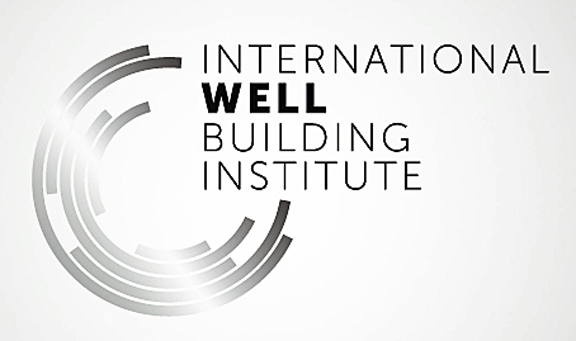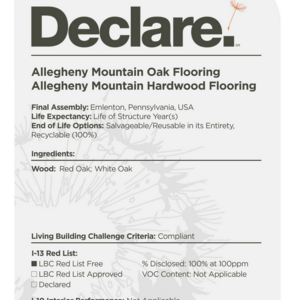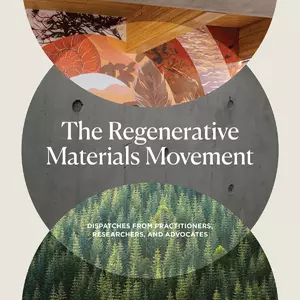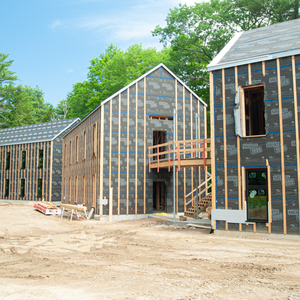Image Credit: International WELL Building Institute
Image Credit: International WELL Building Institute WELL buildings meet certification by incorporating all "preconditions" and gain points leading to Silver, Gold, or Platinum levels by adding "optimizations." New names for the same old concepts.
When I first heard about the WELL building standard, in a New York Times article, I was both amused and offended, and trashed it appropriately in a blog. Since then, WELL has created the International Well Building Institute (IWBI), affiliated with both the Living Futures Institute and USGBC, and has released Version 1.0 of the WELL Building Standard.
Given that there is now an official document rather than a journalist’s interpretation to review, I think it only fair that I give the standard another look.
I recently sat down and dug into the 218-page document and was amused, surprised, and confused — and ultimately decided that while it has some good things in it, I can’t see where it makes much sense in the real world of building development and construction.
According to the executive summary, “The WELL Building Standard focuses on the people living in the building.” It claims to be “The first standard of its kind that focuses attention solely on the health and wellness of building occupants.”
I accept that this is a worthy goal, but I am having trouble believing that another comprehensive program, designed to work “alongside” LEED and the Living Building Challenge (LBC) is necessary. We need to think about reducing the different options for the building industry instead of creating even more of them. We are rapidly approaching “green fatigue,” a term coined by my friend Jim Hackler, and while more programs make give green geeks the jollies, I think they only serve to alienate the average building professional.
Enough complaining — down to the nuts and bolts of the standard
The WELL Building Standard Version 1.0 is applicable to new construction, major renovations, tenant improvements, and “core and shell developments.” Pilot programs are available for educational buildings, multifamily residential buildings, sports facilities, retail stores, and healthcare facilities.
The standard is a set of 102 individual metrics, sorted into seven categories: Air, Water, Nourishment, Light, Fitness, Comfort, and Mind.
Depending on the building type, there are between 27 and 41 requirements (called “preconditions”) for certification. The remaining items (called “optimizations”) provide points to move up to silver, gold, or platinum certification. I guess everyone has to stake a claim, but why does each program use different terminology? Is there really a difference between a prerequisite and a precondition or a credit and an optimization?
There is a rather obtuse calculation to determine your certification level, but I won’t worry about that unless I end up working on a project.
Things I like about it
First off, I appreciate that in the official standard they did not include aromatherapy, vitamin enrichment of water, and posture supportive flooring.
Much of what is in the new standard refers to well established criteria in LEED, LBC, and common air quality, HVAC, and lighting standards documents. They have put forth some interesting ideas, many of which are, to use the correct terminology, “preconditions.” Smoking, including use of e-cigarettes, is banned indoors and restricted outdoors.
Only safe pesticides that meet the San Francisco integrated pest management criteria — including coyote urine — can be used. (Oh, those Californians!)
Building-wide plumbing leak detection system are required. Potable water must be tested and be within limits for numerous pollutants. Projects that have four stories or less must encourage stair use through stairway location, stair width, and amenities such as windows, artwork, and lighting.
The Nourishment section really pushes the envelope, and while I truly appreciate their goals here, I am skeptical that it will gain much traction. If food is sold in the building, fresh, non-fried, fruits and vegetables must be featured; flours must be whole grain; food cannot contain trans-fats; added sugar is limited in drinks; all food containing a long list of allergens must be labeled; and there must be an express checkout line for healthy foods.
As I said, great goals — but this is ’Merica, folks. What are you expecting?
Things I don’t like about it
One precondition that I think is a lost opportunity is moisture management. Buildings must have either a free-draining space (vented rainscreen) between the WRB and the building cladding or a capillary break between the foundation and walls. These are both good practices, but in wet climates, the rainscreen will make a huge difference; the other option gives builders an easy out that shouldn’t be there.
And although WELL requires a continuous air barrier, air leakage testing is optional. Many buildings struggle with envelope leakage issues, often leading to air quality problems. If WELL wants to be a real leader, the standard should require testing and set strict limits.
One requirement requires a 10-foot-long walk-off mat at building entrances; that’s a good idea, but maybe a bit excessive. They do, however, allow installation of carpet tiles inside. I would think that a program devoted exclusively to air quality and wellness would have the guts to keep all carpet out. Tiles are definitely better than wall-to-wall, but still pose a challenge to air quality.
Things I don’t quite understand
The requirements for lighting and glare control make sense, but when they started talking about circadian lighting and “equivalent melanopic lux” being present for four hours, I was clearly above my pay grade. I expect that some highly paid lighting consultants will get a lot of work out of WELL building projects.
And not being an acoustical engineer, I was somewhat lost trying to decipher the acoustical requirements, leading me to believe that those consultants will also benefit from WELL projects.
And yet more letters to put after our names
The IBWI is planning to create a professional accreditation program, the WELL AP, scheduled for launch in 2015. They are “committed to designing the WELL AP program to work harmoniously with AIA, ASID, LEED AP and other credentials.” People working on the current class of WELL buildings will be the first APs. Then, I assume, there will be a training and testing process to obtain the accreditation. I disliked the LEED AP Homes test enough that it’s not likely that I will seek out WELL AP certification for myself — although if opportunities arise, I may change my mind.
Overall, I am pleased that the WELL standard got rid of some of the wacky things that were noted in the original article. The standard is reaching very high, and we may find that the standard both makes inroads into construction and has a lasting effect on building practices.
I remain skeptical that it will gain much traction, either as a stand-alone program or “alongside” other programs. Time will tell.
Weekly Newsletter
Get building science and energy efficiency advice, plus special offers, in your inbox.
















11 Comments
Human health and buildings
Carl,
Thanks for this report, and thanks for you skepticism.
For me, the fundamental problem with health claims for buildings is the near total lack of data showing a correlation between residential building specifications and the health of occupants. In the absence of such data, it's hard to support the claims of the WELL Building Institute.
Negative health outcomes have been shown to be correlated to behavior, but not building specifications. Perhaps future research will reveal the correlation -- but I haven't seen it yet. In the meantime, I think it is extremely risky for designers or builders to make health claims for buildings.
About fried foods
Carl,
You don't have to be 'Merican to wonder about the ban on fried foods. How about the Mediterranean diet -- including spinach-filled Lebanese sambousik, those fried triangular pastries filled with spinach and a little cheese? Those aren't junk food -- that's health food. And yummy!
WELL is a good start to
WELL is a good start to developing consensus for IAQ and IEQ. Not everyone will agree with the process.
I concur with Martin. I also agree with Carl on the carpet tile issue. What's healthy about this? Looks to me like one more organization created to capitalize on the fears of America's office workers.
Let the pampering begin.
The focus really needs to be on the average American home where we spend the majority of our time. This is where IAQ and IEQ standards are desperately needed. This is where are youth are affected.
We're all morons
Sheep yup.... Stupid sheep.
Program after program.... To guide us dumb sheep.
Freedom.... Nonsense... Nope.... Gotta have a leader to LEED us dumb stupid sheep.
Well.... That's how this wild stallian sees it.
Free range libertarian. When I die cook me up. Serve me any way you want.
Reply to Martin
Martin you said: "Negative health outcomes have been shown to be correlated to behavior, but not building specifications."
I think people who have mold issues or radon issues (with their known health issues) would disagree with that statement.
I do however completely get what you are saying though. The problem I have with this program is they are saying this will make you more likely to be healthier, yet this program (even if it gets to the LEED level of acceptance) is unlikely to produce results that will be scientifically valid.
In their defense though a lot of their requirements (at least as I've read in this article) make a lot of sense. Even the fried food one. I remember back in my days as an assistant manager at a fried chicken place, my shirts and ties would end up nasty from all the oil and grease in the air. (yes the vent hoods functioned properly) There is no way that I wasn't breathing in that oil and grease, and there is no way that could be healthy for me.
Response to Donald Endsley
Donald,
You mentioned radon and mold.
The construction industry has a good understanding of radon issues. The International Residential Code includes Appendix F (a radon control standard); local jurisdictions are free to adopt Appendix F if they so choose. Any homeowner who wants to have his or her home tested for radon can do so; radon action levels and radon mitigation techniques are well understood. We don't need a new green building code to address radon.
In my experience, if a house has enough mold to cause health issues, the reason is not because the home wasn't built to a green building standard. Even a house built to code-minimum standards is generally mold-free. Most homes that have extensive mold are either (a) occupied by a low-income family that can't afford important repair work like roof repair or plumbing leak repair; or (b) grossly deficient housing that anyone can recognize has problems, or (c) inhabited by a family whose behavior (for example, conducting a hobby like tropical fish raising or orchid raising, or refusal to operate bath exhaust fans) is causing the problem (meaning that building specifications have nothing to do with it). We don't need an above-code program to ensure that homes will be mold-free.
Radon
The comments about radon sent me back to the WELL standard and I found, interestingly, that while there is a requirement that radon concentrations at the lowest occupied living level must be less than 4 cCi/L, there are no prescriptive requirements listed. There are references to EPA radon documents but no specific requirement for radon venting or mitigation in any radon zones. This seems to me like a big omission that could cause problems if someone is attempting to certify under this standard, particularly since there are no general standards for radon in commercial construction. I suppose there is an implication that radon venting should be installed below slabs and foundations to maintain low levels, but I see potential problems down the road.
Response to Martin
I was merely trying to point out where building specifications/standards have improved occupant health, not that this set of specifications address those. Granted those are known health issues, and this standard seems to mainly address likely to somewhat likely health issues.
Like I said I completely understand where you are coming from however. For instance let's take a look at the stair requirement. The purpose of it is to encourage people to use the stairs more. Let's say they are successful and people do in-fact use the stairs more. That's great right? I mean one or two flights of stairs taken three times a day (up and down) burns about the same amount of calories as what the average adult weight gain is in the US. Yea! we just solved America's weight problem.
Wait a minute though, America's weight problem is not the real issue. While excess weight is a health issue it is mostly a symptom of the real issue. The real issue is that the "American lifestyle" is very sedentary. While making stair use much more feasible is a good step it is only likely to see very minor health improvements. Let me be very clear here, Stair use is a good thing and we all need to use the stairs more. What ever we can do to get more people to use the stairs more often will create health improvements in the general population.
While I agree that occupant behavior is a (the?) major driving force of health, we must also acknowledge that the built environment has an effect on occupant behavior. These specifications seem to try to address that, as well as a few other aspects. Will it be truly effective? I think it will at least be mildly effective.
Hopefully the IWBI will perform quite a few case studies and fund some scientific studies on WELL buildings. Not only so that we can get some evidence that these improvements really do work, but also so they can improve the standard.
Let me know the address of the first WELL building...
...so I can park a Philly Cheese steak, hot dog, wings, fries, and ice cream truck at the front door!
It'll be the "Tired of Tofu?" food truck company.
Tired of Tofu?
I eat plenty of Tofu, Curt, but I will be the first to line up at your truck. Excellent idea.
Donald seriously?
Let's go
Donald seriously?
Let's go hang gliding Don...
Log in or create an account to post a comment.
Sign up Log in